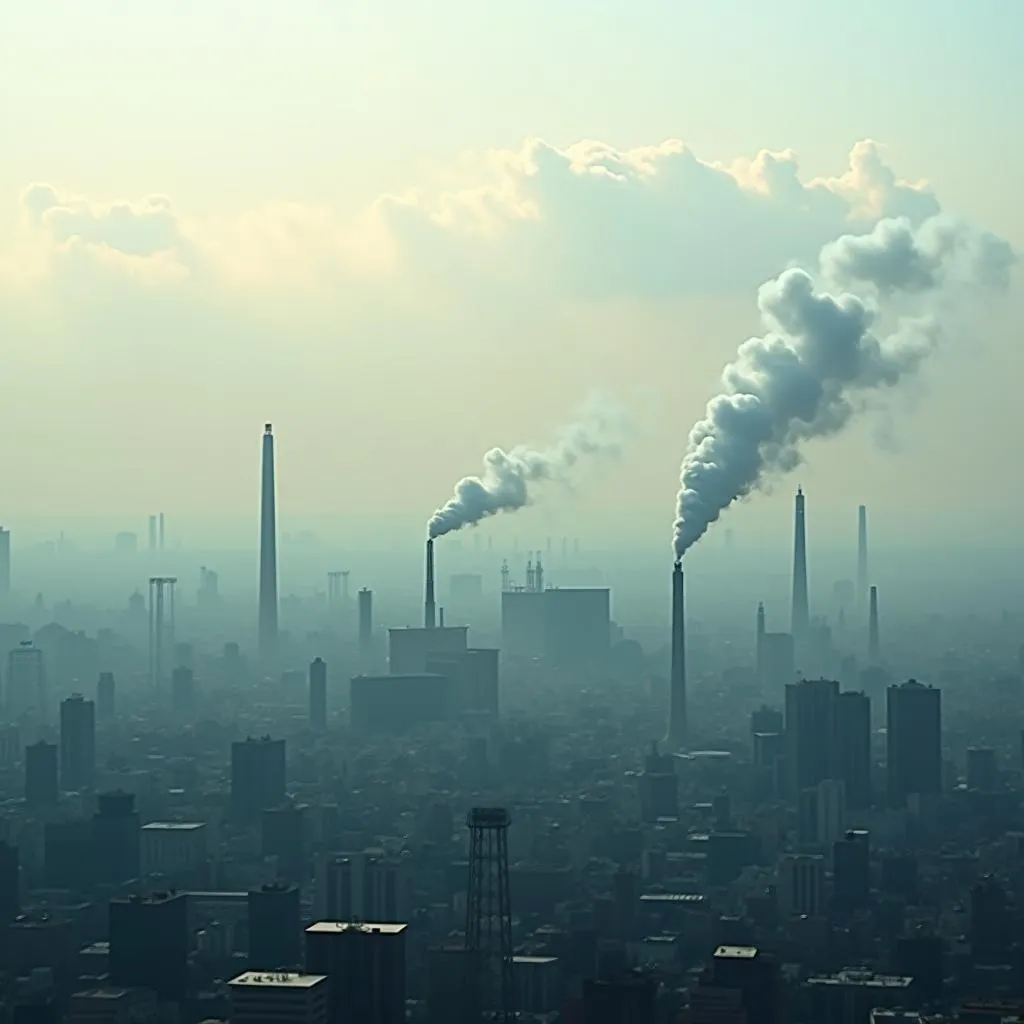Air pollution is a critical issue that impacts both the environment and human health. In the PTE, air pollution often appears as a fundamental topic in the Summarize Written Text section. This article provides sample test prompts and responses based on common themes such as air pollution and public health policies, effectively helping candidates prepare for the test.
Why Air Pollution and Public Health Policies Are Common in PTE?
The global rise in concerns about air pollution is reflected in academic and professional testing environments such as the PTE Academic exam. Candidate preparation for this topic becomes essential, both for evaluating summarization skills and for assessing vocabulary understanding on topics like urban environments and health risk management.
As part of preparation, we have formulated sample PTE Summarize Written Text questions on this frequently tested topic to improve your chances in actual exams.
Example Prompt 1: Air Pollution and Health Risks
Air pollution has been at the forefront of discussions in both developing and developed countries due to its particulate matter (PM) and its harmful effects on human respiratory health. Studies show that air pollution consists of fine particles that can migrate deep into the lungs and bloodstream, leading to various illnesses such as asthma, bronchitis, and cardiovascular diseases. Modern public health policies aim to reduce emissions from vehicles and industries, but the growing rate of urbanization challenges these efforts. Despite regulations, urban centers are experiencing increased levels of pollutants, and this demands a more comprehensive approach to controlling air quality, especially in areas with rapid urban development.
Task: Summarize the text in one sentence.
Example Answers:
Band 90:
Air pollution, primarily caused by industrial and vehicular emissions, significantly harms public health, necessitating stricter public health policies to tackle air quality issues, especially in increasingly urbanized areas.
- Content: High. Accurately reflects the key points of the text.
- Form: Perfect. One sentence, 18-75 words.
- Grammar: High. Correct complex sentence structures.
- Vocabulary: High. Precise use of academic vocabulary such as ‘vehicular emissions,’ ‘urbanized areas,’ etc.
- Spelling: High. No mistakes.
Band 70:
Efforts to control air pollution are being undermined by urbanization, which continues to increase harmful pollutants from vehicles and industries, thus endangering public health.
- Content: Good. Holds essential details, but lacks some complexity regarding policies.
- Form: Perfect. Concise but aligned with text length requirements.
- Grammar: Moderate. Sentence structure is good, but simpler.
- Vocabulary: Adequate. Some use of key terms but limited diversity.
- Spelling: High. No spelling errors.
Band 50:
Pollution from cars and factories is dangerous for health and cities are not improving enough to stop this.
- Content: Low. Lacks reflection on public health policies or specific diseases.
- Form: Meets requirement under 75 words but overly simplistic.
- Grammar: Basic. Structure is basic and lacks complexity.
- Vocabulary: Low. Very simple vocabulary without key terms.
- Spelling: High. No mistakes.
For further reading on related topics such as Air pollution and health risks, check out the in-depth articles.
 Air pollution caused by industrial activities in an urban city with visible smog.
Air pollution caused by industrial activities in an urban city with visible smog.
Example Prompt 2: Urbanization and Environmental Challenges
Rapid urbanization has a profound impact on both social structures and environmental factors, with air quality being one of the most severely affected elements. Increased construction, traffic congestion, and industrial emissions contribute to deteriorating air quality, and many public health policies remain insufficient in combating these rising pollution levels. Measures such as stricter emissions regulations, investment in public transport, and greening urban spaces are being implemented globally, but challenges persist due to the fast pace of urban development.
Task: Summarize the text in one sentence.
Example Answers:
Band 90:
The rapid pace of urbanization leads to increased air pollution, and while various policies are implemented globally to address this issue, challenges remain abundantly due to fast-paced urban growth.
- Content: High. Encapsulates the relationship between urbanization and its impact on air quality while mentioning public policies.
- Form: Correct structure and length.
- Grammar: Excellent control of sentence complexity.
- Vocabulary: Relevant and varied.
- Spelling: No mistakes.
Band 70:
Urban development causes more pollution, and despite efforts to improve air quality, many policies are not enough.
- Content: Adequate. Misses mentioning key solutions like public transport and greening initiatives.
- Form: Sufficient. Meets word count requirement.
- Grammar: Fair. Limited grammatical range.
- Vocabulary: Limited use of topic-specific vocabulary.
- Spelling: No errors.
For more context on urban ecosystems, refer to Urban ecosystems and public health.
Vocabulary and Grammar Breakdown
Here are some useful terms that appeared in the sample Summarize Written Text practice questions related to Air Pollution And Public Health Policies:
-
Particulate matter (PM) /ˈpɑːr.tɪ.kjʊ.lət ˈmætər/ – Microscopic particles in the air that contribute to air pollution.
Example: The concentration of particulate matter in urban areas is alarmingly high. -
Cardiovascular (adj.) /ˌkɑːr.di.oʊˈvæs.kjə.lər/ – Relating to the heart and blood vessels.
Example: Long-term exposure to pollution can cause cardiovascular diseases. -
Greening (v.) /ˈɡriː.nɪŋ/ – Increasing vegetation in urban areas to reduce pollution.
Example: The city embarked on a greening campaign to combat pollution. -
Emissions (n.) /ɪˈmɪʃ.ənz/ – Pollutants released into the atmosphere by industries or vehicles.
Example: Reducing factory emissions is key to improving air quality. -
Congestion (n.) /kənˈdʒes.tʃən/ – Overcrowding, often leading to traffic jams, higher vehicle emissions, and reduced air quality.
Example: Traffic congestion in large cities significantly contributes to air pollution.
 Heavy urban traffic congestion contributing to higher vehicle emissions and air pollution.
Heavy urban traffic congestion contributing to higher vehicle emissions and air pollution.
-
Respiratory (adj.) /ˈres.pə.rə.tɔːr.i/ – Related to breathing or lungs.
Example: High levels of pollutants exacerbate respiratory illnesses. -
Urbanization (n.) /ˌɜː.bən.aɪˈzeɪ.ʃən/ – The process where cities grow and expand.
Example: Rapid urbanization leads to declining air quality. -
Regulations (n.) /ˌreɡ.jəˈleɪ.ʃənz/ – Official rules to control behavior or processes.
Example: New emissions regulations were enforced to reduce factory pollution. -
Public health (n.) /ˈpʌb.lɪk hɛlθ/ – The health of the population as a whole, particularly as monitored, regulated, or treated by a society.
Example: Public health policies are crucial to tackle the effects of air pollution. -
Asthma (n.) /ˈæz.mə/ – A condition in which a person’s airways become inflamed, narrowed, and produce extra mucus, making it difficult to breathe.
Example: Rising air pollution levels have increased asthma cases in the city’s residents.
Conclusion
Mastering the Summarize Written Text section of the PTE exam is critical for achieving a high score, particularly when faced with topics like air pollution and public health policies. By practicing the provided sample questions, test takers can not only improve their summarization skills but also become more familiar with complex vocabulary and academic sentence structures.
To explore similar topics, check out Urbanization and its social challenges and Environmental justice in urban planning.
Happy practicing and feel free to leave any questions or comments!